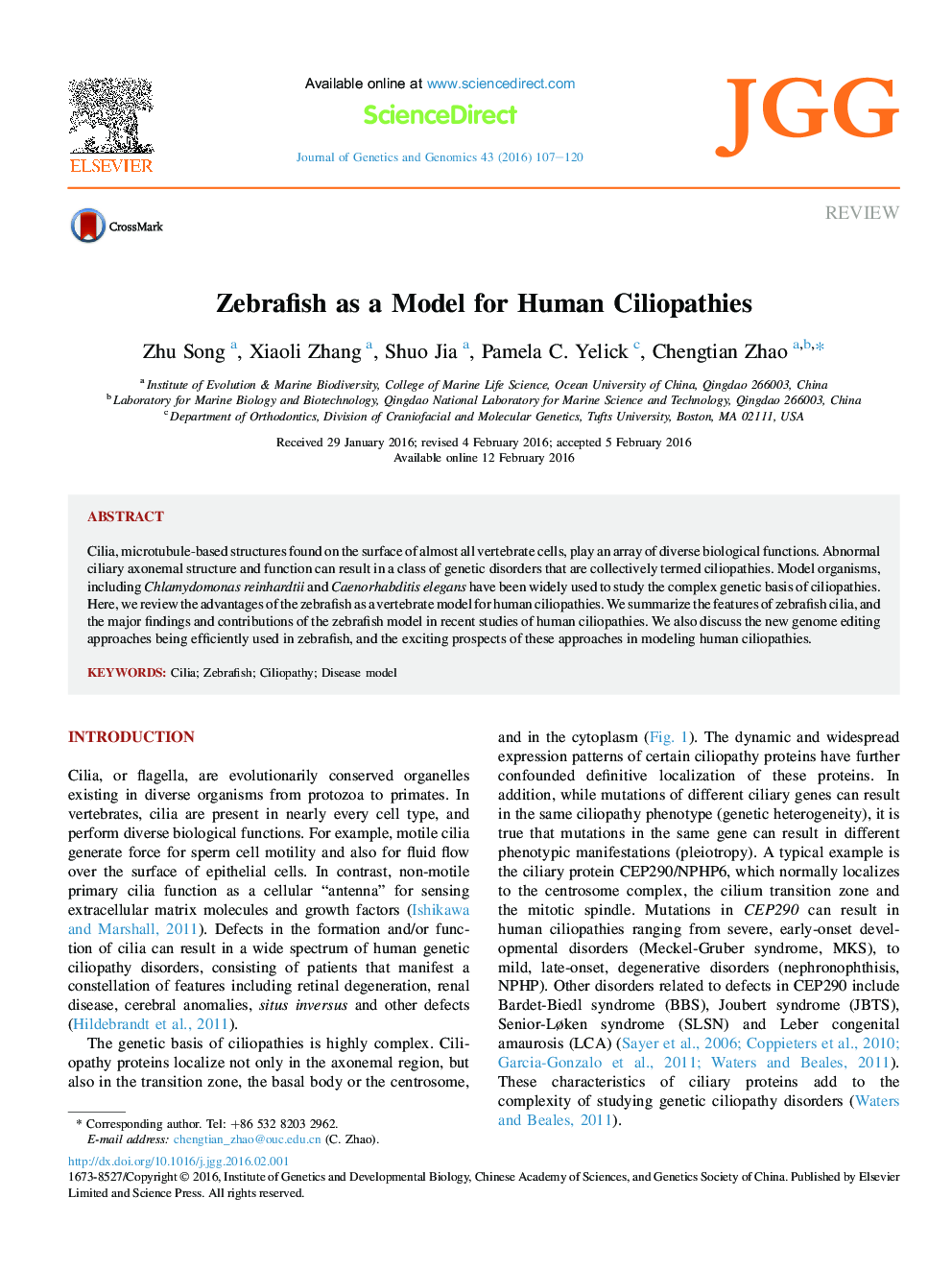| Article ID | Journal | Published Year | Pages | File Type |
|---|---|---|---|---|
| 2787257 | Journal of Genetics and Genomics | 2016 | 14 Pages |
Cilia, microtubule-based structures found on the surface of almost all vertebrate cells, play an array of diverse biological functions. Abnormal ciliary axonemal structure and function can result in a class of genetic disorders that are collectively termed ciliopathies. Model organisms, including Chlamydomonas reinhardtii and Caenorhabditis elegans have been widely used to study the complex genetic basis of ciliopathies. Here, we review the advantages of the zebrafish as a vertebrate model for human ciliopathies. We summarize the features of zebrafish cilia, and the major findings and contributions of the zebrafish model in recent studies of human ciliopathies. We also discuss the new genome editing approaches being efficiently used in zebrafish, and the exciting prospects of these approaches in modeling human ciliopathies.
